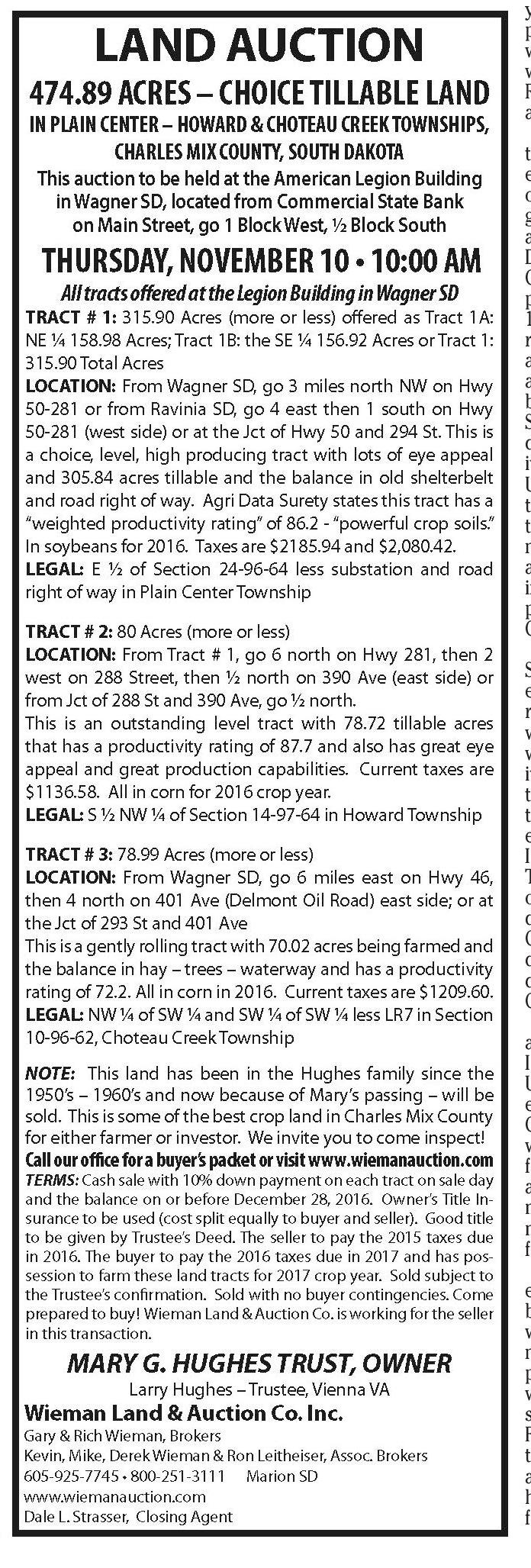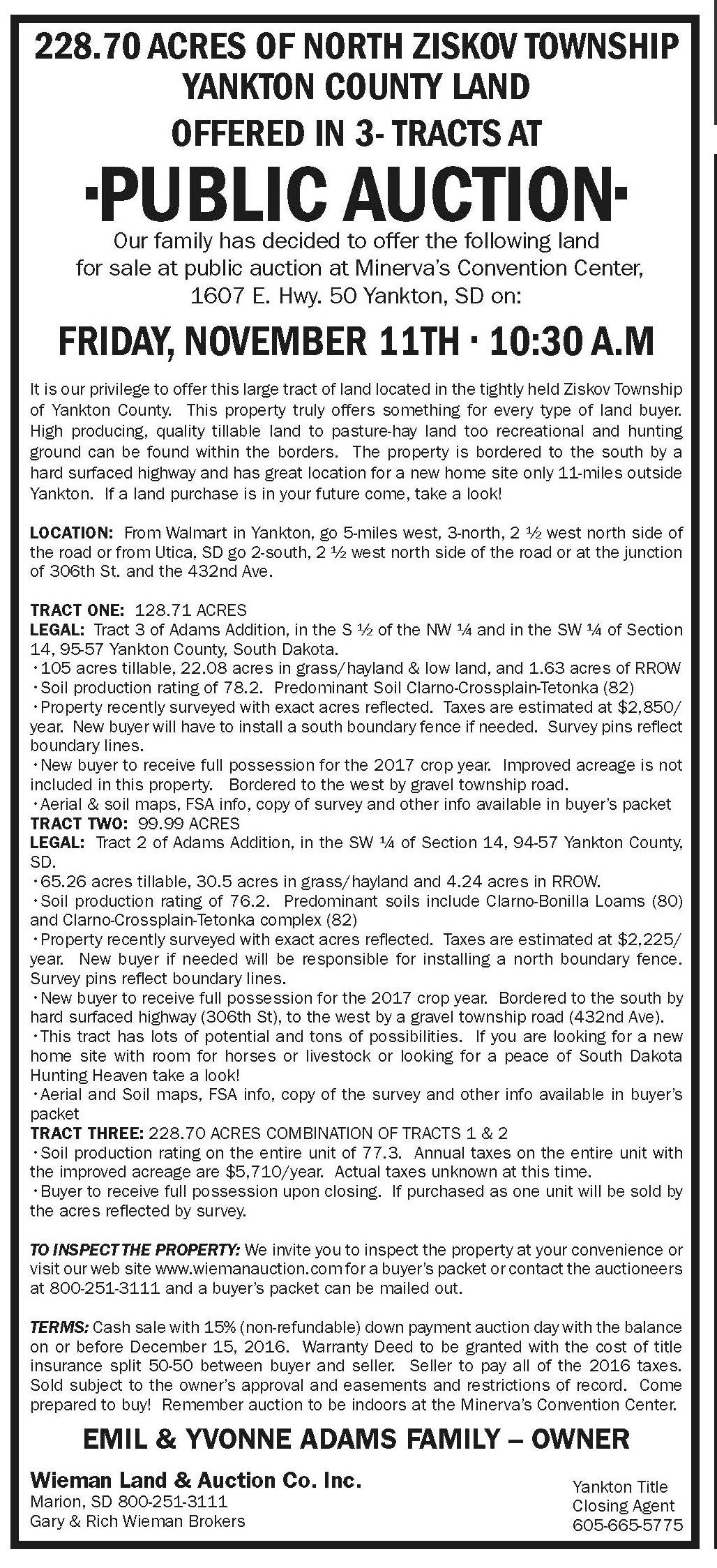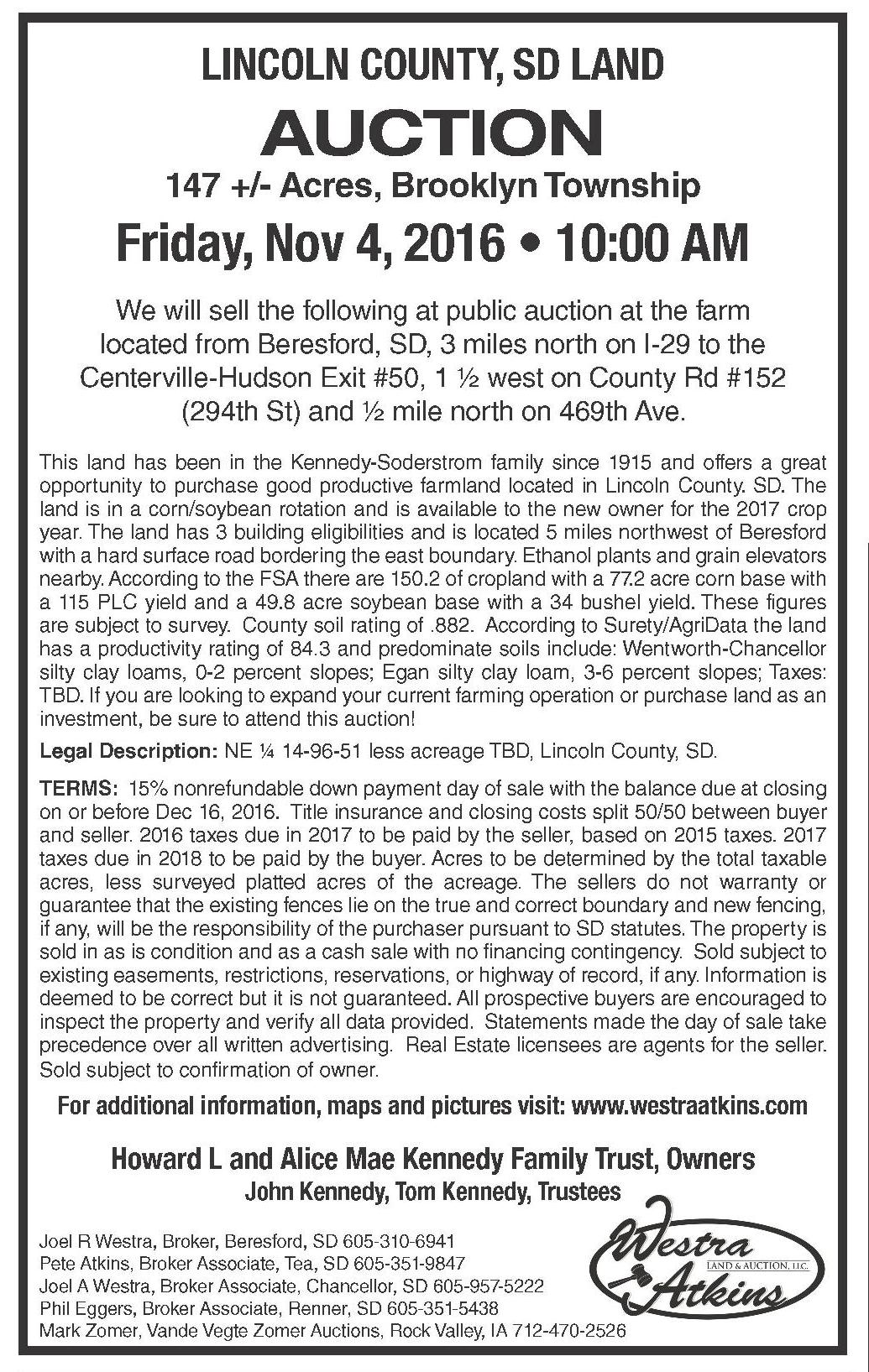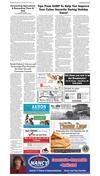101816_YKBP_A8.pdf





8 Broadcaster Press
Market Yourself
Increase your business’s exposure, build connections and
multiply opportunities with effective print advertising.
October 18, 2016 www.broadcasteronline.com
Broadcaster Press
201 W Cherry St. • Vermillion • 624-4429
AUCTIONS
A South
Dakotan’s
Field of
Dreams
By Sen. John Thune
When South Dakotans picture opening day of pheasant
season, they see unharvested
corn and milo fields, sloughs,
shelterbelts, and food plots
lined with hunters – often
friends and family, conspicuous in their bright orange
clothing. Although shooting
a limit of pheasants isn’t the
mark of a successful hunt,
the allure of the “Pheasant
Capital of the World” is why
hunters from across the
United States gather in South
Dakota every third Saturday
in October to participate in
this world-class event and
renew or create family memories and traditions.
As you walk through the
amply covered fields during
your fall hunt, it’s important
to think about what the surrounding landscape looks like
in winter after the crops are
harvested, snow covers the
ground, and temperatures
dive below zero. It’s also
important to think about the
spring nesting season when
quality habitat is crucial for
pheasants to hide their nests
and offer protection to their
young chicks. Most people
probably assume that’s
what the widely known and
well-respected Conservation
Reserve Program (CRP) is for,
and they would be right.
Since its authorization in
the 1985 farm bill, CRP has
evolved into the cornerstone
of federal conservation programs and has helped create
a field of dreams for South
Dakota pheasant hunters.
CRP acreage in South Dakota
peaked in 2007 at more than
1.5 million acres, and as a
result of the nesting habitat
and winter cover most CRP
acres provide, pheasant numbers increased dramatically.
Since then, CRP acreage has
dropped, and unfortunately
it’s only going to get worse.
U.S. Department of Agriculture (USDA) reports show
that over the next six years,
nearly 580,000 additional
acres will expire from CRP
in South Dakota – that’s a 60
percent loss of our current
CRP-enrolled acres.
The opportunity for
South Dakota landowners to
enroll more land in the most
recent general CRP sign-up
was significantly hamstrung
when the USDA announced
it had accepted just 107 of
the more than 40,000 acres
that South Dakota landowners had offered. In response,
I wrote to USDA Secretary
Tom Vilsack and later had an
opportunity to question him
during a Senate Agriculture
Committee hearing about the
department’s disappointing
decision and inappropriate
CRP management practices.
As a member of the Senate Agriculture Committee,
I will continue to work with
USDA officials and focus my
efforts on making changes to
CRP policy next year when
we begin debate on the next
farm bill to ensure adequate
and equitable CRP enrollment and common-sense
management of CRP in the
future.
Keeping adequate acres
enrolled in South Dakota will
benefit everyone because it
will help maintain our state’s
nearly quarter-million-dollar
pheasant hunting industry,
which directly benefits our
small towns and rural areas.
Farmers will continue to protect and preserve soil health,
and our state’s pheasant
hunting legacy will continue
for generations to come.




















 Previous Page
Previous Page






